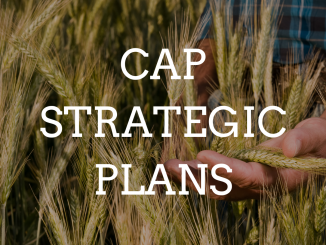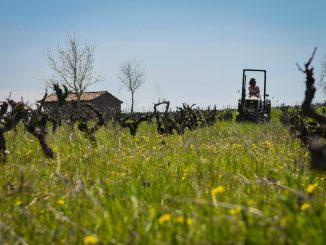We’ve completed an eight part series on soil. It’s been informative, enlightening, occasionally controversial and most of all engaging. Below we summarise the series.
#SoilMatters – so how best to treat it? In this opener, we gave soil as wide an interpenetration and consideration as possible. We asked a lot of questions. We asked about nuances around Europe, about no till, about organic techniques, about permanent grasslands, and about the implications of these and other dimensions to farming and food in wider societal terms. And, we featured some fun videos!
Unusually, our opening contribution was perhaps the most controversial of all. Soil Scientist Dr. Andrea Beste wrote about us about humus, soil structures and the limits of no-till. Emphasising soil biodiversity, humus and soil structure is typical enough, but criticising no till – at all – really seems to rile people up – at least on twitter! (As of yet, none of the complainers on twitter have come forward with an article refuting what’s said in this article….but our pages are open to considered positions).
Beste’s position is no against no till per se, but, rather, considers it in relation to its contribution to humus building, micro vs macro pores and desirable sponge structures vs soil compaction, deeper carbon below 15 cm, use of fertilizers and broad spectrum herbicides, but, importantly, how it can work in highly diverse agroecological systems, contextualised by increasing prevalence of extreme weather like droughts and floods.
#SoilMatters | Part 1: Andrea Beste on humus, soil structures & the limits of no-till
As his opening contribution to #SoilMatters, Soil Scientist Mario Catizzone outlines some immutable soil facts, while introducing the UN FAO’s Voluntary Guidelines on Sustainable Soil Management.
#SoilMatters part 2 | Mario Catizzone and Sustainable Soil Management
The role of farming in climate change mitigation is controversial and fraught. The UN COP (Conference of Parties) Climate Change has tentatively introduced soil and carbon sequestration into its workings, via 4 pour 1000. However the role of particular agronomic practices involving livestock is under special scrutiny. Does livestock release more than it sequesters, or does the farming model matter? What about deep carbon storage? And how will policy makers work with new research and 4p1000? Oliver Moore asks these questions.
“But its not just about what’s on top, it may be about what’s deeper down too. Published work in Nature Scientific Reports in 2017 revealed soils with high clay content in deeper layers lock away carbon for much longer, and at much greater depth than previously known.
While topsoil carbon is quite volatile, at deeper layers, carbon can be stored for longer. This is especially the case for “grassland soils with high clay content in deep layers, where the clay particles have washed from the topsoil to the subsoil.”
The researchers claim that the Paris Agreement of the United Nations Framework Convention on Climate Change (UNFCCC) “has thus far only considered the top 30 cms of soil, known as topsoil.”
#SoilMatters Part 3 | Soil, Carbon and Policy – where now for 4p1000?
When we change how land is used, it doesn’t just impact on this one area. Italian trio Riccardo Scalenghe, Francesco Malucelli and Mario Catizzone examine soil matters in the Emilia-Romagna Plain, Italy, and help us understand what is truly lost when we loose soil without thinking about all the impacts.
“In Emilia-Romagna in Italy the conversion of 15,000 ha of agricultural soil caused a net loss of the calories needed by 14% of local population. When economic, environmental and social criteria are balanced, the planning of land–use systems could be perceived as sustainable. This is especially the case when natural soil functions are considered – its best to avoid aberrations of natural processes while soil disturbances are extremely demanding to correct.”
#SoilMatters part 4 | What do we really lose, when we change how land is used?
“A sustainable food system is not about reducing animal-product consumption so to ‘free-up’ land for direct-for-human-food plants: rather, it is about using the land now used for feeds for shipping to animals confined elsewhere, for grazing livestock – be they ruminants, pigs or poultry.” Stuart Meikle outlines his position.
“If there is a universal panacea for our food systems, it can be found in how we restore the health and productivity of our soils. By saying such one could however be guilty, as is often the case, of allowing a single issue to dominate. Whereas identifying a sustainable food system, differing as they must region by region, is in fact a complex process that requires the joining of numerous dots across a broad canvas. If you focus on one issue alone, lo and behold, unforeseen consequences happen elsewhere.
And yet, intriguingly, as one looks at soil regeneration, the solutions for many of our other problems emerge.”
#SoilMatters Part 5 | Stuart Meikle on Soil, Ruminants & Sustainable Food
Roy Neilson and Blair McKenzie of the James Hutton Institute start with the consideration – what do we want from our soil? They move from here on a fascinating journey into the difference between soil texture and structure, into soil management, organic matter, and the impact of different practices on soil.
“…farmed soils deliver a wide range of functions and benefits, both for the farmer and society at large. With expanding populations and the loss of soil to housing, roads and other infrastructure associated with urbanisation there is less soil available to deliver these societal goods. In many cases there will be trade-offs between functions – both in space (e.g. large-scale crop production vs biodiversity) and in time (e.g. the response to amendments) and maintaining the functions and benefits that soil deliver is a balancing act of management strategies. There are multiple threats to soils and the first part of any consideration to improve soil functions must be the preservation and protection of the soils that we have.”
#SoilMatters part 6 | What do we want of our soil? And how do we get it?
Stuart Meikle focuses on three main areas: society, farming and transitioning – all to soil-focused farming. The transition section includes seven suggestions for new farm support mechanisms. These suggestions focus on both payments and practices.
#SoilMatters part 7 | Soil, Farming and Society: support mechanisms for the necessary transition
Interested in reducing the GHG emissions from producing our food? Better nutrition and health and lower healthcare costs? Reducing the pollution from our food production systems? Then read what Stuart Miekle has to say about how a soil focused farming benefits these and other aspects of society. This builds upon Stuart Miekle’s earlier contributions, and includes a comprehensive examination of soil in society – in all its facets. this is an especially apt way to conclude our #SoilMatters debate, as it includes a 10,000 word downloadable PDF on soil in society by Stuart Miekle.




